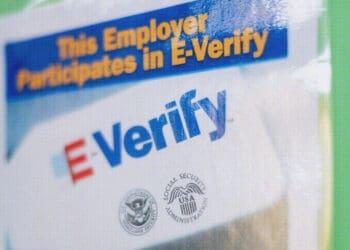As shifting tariffs, tighter immigration controls and new federal legislation reshape the landscape for multinationals, Vistra’s Saul Howerton unpacks what these changes mean for global employee mobility today — and what’s coming next.
In recent months, the employee mobility landscape has undergone significant changes due to several key developments, including the passage of the One Big Beautiful Bill Act (OBBBA) in the US, the flurry of tariff activity since April and increased US immigration scrutiny.
These changes are part of a broader trend: Even before 2025, many US multinationals were already rethinking their assignment strategy, favoring shorter, tax-equalized outbound assignments over traditional long-term placements.
These shifts can be pinned down to comparatively lower US tax rates; global inflation, which has increased the cost of assignment benefits like housing allowances; and the cost-effectiveness of US inbound assignments, which have led many companies to use inbound postings to offset outbound expenses.
Global mobility and the OBBBA
Signed into law July 4, the wide-ranging OBBBA extended major tax cuts and introduced new worker and senior tax breaks. Notably, the law didn’t make radical changes for inbound or outbound US expats but instead preserved most of the previous US tax legislation set to expire after 2025. This continuity provided welcome certainty to the business world in a time of change, volatility and ambiguity.
However, several tax changes under the new law will affect some expats. These include changes to overtime pay rules, the state and local tax (SALT) cap, electric vehicle and child tax credits, qualified small-business stock (QSBS) and alternative minimum tax (AMT), among other provisions.
While both outbound and inbound tax-equalized assignments are expected to result in lower overall US tax liability after the OBBBA, in most cases, the decrease will be relatively small compared to pre-act levels.
The law also includes corporate tax incentives that encourage US businesses to produce and invest more within the country, which is expected to prolong the current global mobility trends.
As Trump Promises Immigration Crackdown, I-9 Landscape Is Poised for Upheaval
From increased worksite enforcement to potential E-Verify mandates, employers face a complex new era of hiring compliance
Read moreDetailsTariffs and global mobility: The X factor
When it comes to global mobility, tariffs could be the X factor, the variable that ultimately shapes corporate strategy.
The main goal of US tariff policies is to lower the costs and obstacles for exporting US goods abroad while onshoring investments into the US for job and wage growth. If both can be accomplished, this will be a win-win for US companies from both an inbound and outbound global mobility perspective.
Inbound mobility to the US is expected to benefit the most from tariffs. Lower US tax rates for expats compared to their home countries might encourage companies to bring more talent to the US to open new or existing markets.
However, one major speed bump could be US immigration policies and just how open the US will be to foreign talent. In September 2025, the Trump Administration raised the cost of the H-1B visa, which allows US employers to temporarily employ foreign workers in speciality occupations, to $100,000.
Still, if the immigration variable can be resolved favorably, then strong growth in inbound mobility can be expected.
US outbound mobility could also present opportunities for multinationals’ expansion plans under this new global framework. Reducing tariffs on US goods and easing import barriers would likely create new opportunities for US companies to expand overseas, thereby increasing the demand for US expatriates.
Tax and other cost considerations for these expatriates will continue to significantly influence factors like duration, cost-plus benefits packages, tax equalization, treaty application, equity planning and corporate-level issues.
While tariffs remain in a state of flux, there should be an upside for US global mobility if these trade deals are successfully implemented.
Following the investment
Yes, tariffs, taxes and immigration have undeniably reshaped the global mobility playbook, but the question remains — where this is all heading?
If planned US investments materialize, there will be heightened demand for skilled talent on American soil. Add in the widening tax gap between the US and higher-tax jurisdictions, and the US could become an attractive destination for global mobility programs.
At the same time, longer-term US outbound assignments are declining. As a result, companies are choosing either short-term tax-equalized assignments of six to 18 months, or early localization where employees are transitioned more quickly to local pay and benefits.
Inbound vs. outbound
There is no hard-and-fast rule for inbound or outbound mobility, with the decision depending on the company itself. As the aphorism goes, knowledge is power. Companies considering their inbound mobility strategies should seek to gain an understanding of the US immigration landscape and get local legal support.
These firms should also consider tax equalization rather than a straight permanent transfer, unless tax savings to the expat are part of the package to remain competitive. Alternatively, firms might consider reducing tax protections on US assignment benefits. State locations, remote work and business travel criteria should be evaluated to maximize tax savings to both the expat and company.
Those considering outbound mobility should consider initial assignment durations of six, 12 or 18 months to benefit from special tax rules.
Additionally, US businesses should ensure tax equalization programs are truly global. For example, when sending talent to lower-tax jurisdictions, such as Hong Kong or Singapore, tax benefits can be reclaimed.
Overall, companies should revisit their existing assignments to check hypothetical taxes and tax accruals, making sure costs remain sustainable. For new assignments, tax estimates need updating, and it may be time to rethink assignment terms and packages in light of the latest changes.




 Saul Howerton is vice president and global head of people advisory at Vistra, a corporate services firm.
Saul Howerton is vice president and global head of people advisory at Vistra, a corporate services firm. 








